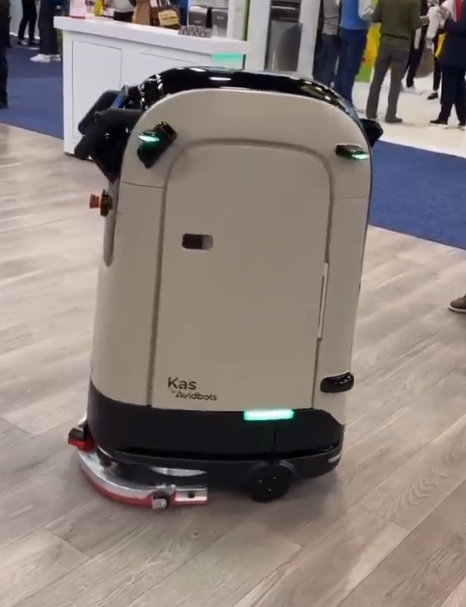Avidbots Corp embarked on a project to create a new robot, where I played a key role in developing a new AMR navigation sensor layout.
I integrated various sensors into the Autonomy, calibration, and monitoring systems, requiring expertise in robotic development and software. Additionally, I led the transition of an autonomous robot prototype from simulation to hardware, involving careful coordination and problem-solving across teams.
Actions
Development and Prototyping of AMR Navigation Sensor Layout
- 3D Design: Utilized Onshape for 3D design, 3D printing and sheet metal design, prototyping a new layout for a new AMR model navigation sensors: Lidars, 3D sensors and RGB cameras.
- Driver Development: Employed C++ and Python to contribute to the development of ROS drivers necessary for integrating 3D sensors and lidars
- Sensor Integration: Integrated various sensors into Autonomy,calibration and monitoring systems.
- Sensor Qualification: Conducted sensor qualification tests to ensure the functionality of the sensors with the system. The system is a safety critical system and the sensors are a key component of the system.


Robotic Experiment Design
- Continuously integrated different sensors into a testing robot, then designed and conducted experiments to test the performance of the AMR navigation sensor layout and other perception metrics. Activities included environment and test track setup, sensor integration, mapping programming the robot to follow the test track.
- Conducted 2D and 3D vision data analysis on experiment data and for sensor testing and qualification.

Transition from Simulation to Hardware
- Successfully led the transition of a new autonomous robot prototype from simulation to hardware.
- Resolved incompatibilities through meticulous data analysis, cross-team coordination, and code updates.
Rapid Prototyping Space Management
- Initiated and managed a space dedicated to rapid prototyping, fostering innovation across software teams and advanced technology teams, and enabling faster development cycles.
Tools and Technologies Employed
- Utilized Linux, ROS, C++, Python, Bash, and Onshape to accomplish various tasks related to design, development, and integration.
Impact
-
Enhanced Sensor Integration: The development and integration of a new Lidar, Led to the design of a laser manager that can accommodate different lidar models.
-
Successful Transition to Hardware: Fitting avidbots Autonomy into a new robot model and leading the transition from simulation to hardware for the autonomous robot prototype, I ensured the compatibility and readiness of the system, moving it closer to real-world application.
-
Innovation Acceleration: By initiating and managing a rapid prototyping space, I helped accelerate the pace of innovation within the team, fostering creativity and enabling faster development cycles.
-
Comprehensive Skill Utilization: My work at Avidbots demonstrated the application of various technical skills including programming (C++, Python, Bash), 3D design (OnShape), hardware integration and debugging, and theoretical knowledge (Linear Algebra, Probability, Control Systems), reflecting a overall approach to problem-solving in the realm of autonomy and robotics.
Improvements
-
One of the main things I learned at avidbots is to invest in automating manual processes, such as manual calibrations.
-
I am also improving on software development and software engineering practices.
Next Steps
-
Avidbots went through restructuring and my position was unfortunately eliminated.
-
I have decided to build my own autonomous robot as a side project, and I am currently working on the design and development of the robot. This will help me improve my skills in all different aspects of robotics and autonomy.
-
I am also looking for opportunities that align with my interests, in robotics or mechatronics domain.